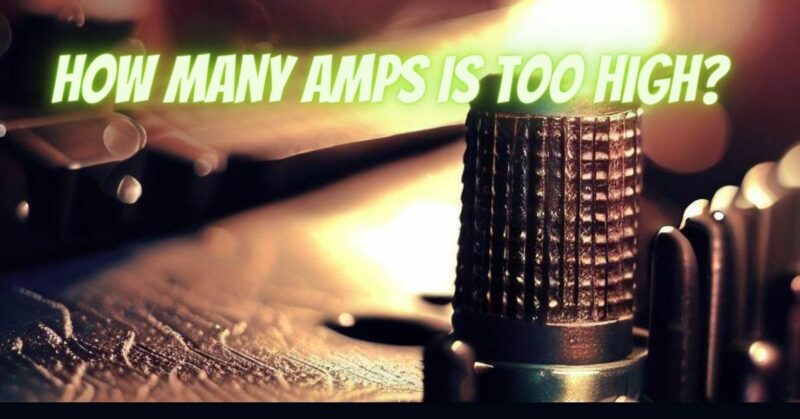In the world of audio equipment, understanding amplifier power ratings is essential to achieve the best sound quality while avoiding damage to your speakers and other audio components. The question often arises: How many audio amps is too high? This article aims to shed light on amplifier power ratings, their significance, and the factors that determine when amplifier power becomes excessive.
What Is Amplifier Power?
Amplifier power, usually measured in watts (W), represents the amount of electrical energy an amplifier can deliver to drive speakers or headphones. This power is what produces sound from your audio system. Amplifiers come in various power ratings, and the right choice depends on your specific needs and the characteristics of your speakers.
Understanding Speaker Sensitivity
To determine how many audio amps are suitable for your setup, it’s crucial to consider speaker sensitivity. Speaker sensitivity, measured in decibels (dB), indicates how loud a speaker will play when supplied with 1 watt of power at a distance of 1 meter. Higher sensitivity speakers produce louder sounds with less power, while lower sensitivity speakers require more power to achieve the same volume.
Speaker sensitivity is a crucial factor in the power requirement equation. A speaker with a higher sensitivity rating requires fewer amps to reach a desired volume level, while a less sensitive speaker may demand more amplification.
Matching Amplifier Power to Speakers
To avoid the risk of damaging your speakers or experiencing distortion, it’s important to match the power of your amplifier to the specifications of your speakers. Here are some general guidelines:
- Check Speaker Ratings: Review your speakers’ specifications, particularly their power handling capability. This rating represents the maximum amount of power the speaker can handle without potential damage.
- RMS vs. Peak Power: Pay attention to the RMS (root mean square) power rating of your speakers. It provides a more realistic measure of continuous power handling than peak power, which represents short bursts of energy.
- Aim for a Balanced Match: A general rule of thumb is to choose an amplifier that can deliver power in the range of 75% to 150% of the speaker’s RMS power handling. This ensures adequate headroom for dynamic music without risking damage.
- Consider Speaker Impedance: Match the amplifier’s output impedance with the speakers’ nominal impedance to ensure proper power transfer. Using an amplifier with an incompatible impedance can result in inefficient power delivery and potentially damage your components.
Avoiding Excessive Amplification
Excessive amplification, or using too many audio amps, can lead to several issues:
- Speaker Damage: Overpowering speakers can cause the voice coil to overheat and even melt, leading to permanent damage.
- Distortion: Excessive power can cause distortion, reducing audio quality and clarity.
- Hearing Damage: Extremely high volume levels can damage your hearing and potentially harm others in the vicinity.
The question of how many audio amps are too high depends on your specific audio equipment and the sensitivity of your speakers. Matching the power of your amplifier to your speakers’ specifications is essential for achieving the best sound quality while avoiding damage. Remember that excessive amplification can lead to issues like speaker damage, distortion, and hearing damage, so it’s crucial to find the right balance in your audio system to enjoy high-quality audio reproduction safely. If you’re uncertain about your setup, consult with audio experts or professional installers to ensure a proper match and optimal audio performance.


